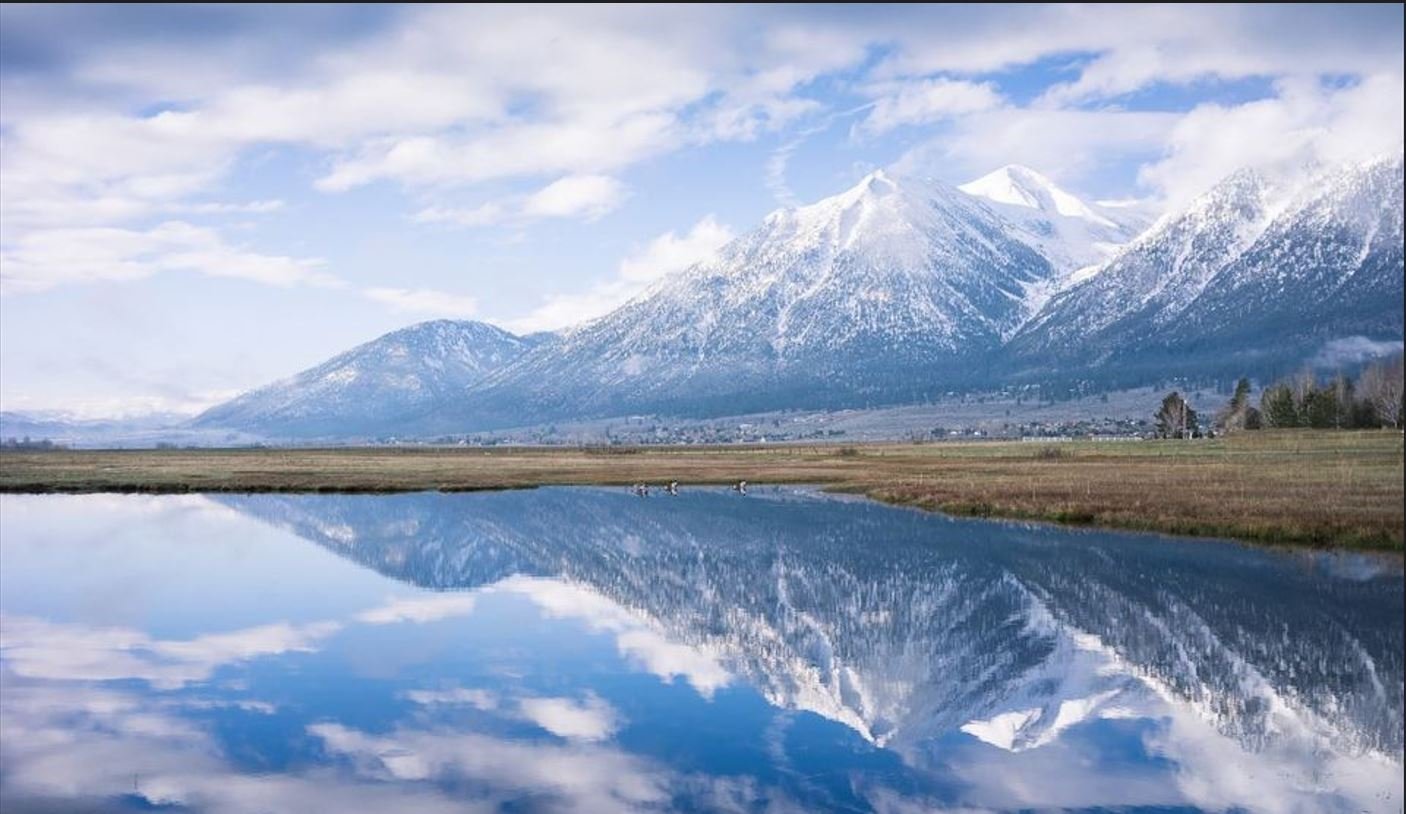Lithium battery storage temperatures
Estragon
Registered Users Posts: 4,503 ✭✭✭✭✭
It's time to replace my 48v flooded bank, and I'm strongly considering something like Midnite Solar Powerflo. One thing giving me pause is the cold winters at the cabin.
I know charging is a Bad Thing below freezing, so I'd build an insulated box with some sort of heating if/when required. The PF16 has heating built in, but it's pretty heavy to get to the cabin and installed (and out of stock at NAZ). The 5kw rackmount isn't heated, but easier to move. I'd likely use a Midnite AIO for closed-loop charging.
The cabin isn't used much in the winter, so I'd turn the system (including the batteries) off when not there. Midnite's specs for both batteries is:
Charging Temperature 32°F to 122°F(0°C to 50°C)
Operating Temperature -4°F to 122°F (-20°C to 50°C)
Storage Temperature 14°F to 113°F (-10°C to 45°C)
It seems odd that the storage temp window is narrower than the operating. Anyway, it gets to -40F at times in winter and even in an insulated box the batteries will likely end up cold-soaked to something approaching that while everything is turned off.
Does anyone know if this is going to be a deal-breaker?
I know charging is a Bad Thing below freezing, so I'd build an insulated box with some sort of heating if/when required. The PF16 has heating built in, but it's pretty heavy to get to the cabin and installed (and out of stock at NAZ). The 5kw rackmount isn't heated, but easier to move. I'd likely use a Midnite AIO for closed-loop charging.
The cabin isn't used much in the winter, so I'd turn the system (including the batteries) off when not there. Midnite's specs for both batteries is:
Charging Temperature 32°F to 122°F(0°C to 50°C)
Operating Temperature -4°F to 122°F (-20°C to 50°C)
Storage Temperature 14°F to 113°F (-10°C to 45°C)
It seems odd that the storage temp window is narrower than the operating. Anyway, it gets to -40F at times in winter and even in an insulated box the batteries will likely end up cold-soaked to something approaching that while everything is turned off.
Does anyone know if this is going to be a deal-breaker?
Off-grid.
Main system ~4kw panels into 2xMNClassic150 370ah 48v bank 2xOutback 3548 inverter 120v + 240v autotransformer
Night system ~1kw panels into 1xMNClassic150 700ah 12v bank morningstar 300w inverter
Main system ~4kw panels into 2xMNClassic150 370ah 48v bank 2xOutback 3548 inverter 120v + 240v autotransformer
Night system ~1kw panels into 1xMNClassic150 700ah 12v bank morningstar 300w inverter
Comments
-
I would certainly contact the battery supplier, if not the mfg., regarding minimum storage temperatures and warranty support...
If you can dig (or have) a small cellar, something like 4 feet or more below ground level, there is a good chance that (in most areas of the world), the ground temperature will not drop much below freezing.
Some charts for Toronto Canada areas that suggest the frost line:
Soil seasonal variations vs soil depth:
https://www.builditsolar.com/Projects/Cooling/EarthTemperatures.htm
Construction "Frost Line" example for Toronto:
https://www.thepostholediggers.ca/frost-line-facts-post-hole-digging-and-frost-lines-in-toronto/
You can probably check with your local building department for more information on Frost Line levels for your area...
Of course, other issues may arise--Can you did a cellar (stone/rocks?), will it remain dry during winter?
Design of cellar? Need an insulated lid/door/walls to prevent heat flow from "over cooling" the cellar air (hear rising, cold settling).
Some examples of electric battery heating pads (if you will be going in winter and have a genset to "preheat" the batteries for winter stays (as well as insulated boxes/storage area):
https://www.batteryskills.com/how-to-keep-lithium-batteries-warm-in-cold-weather/
Or use RV tank heating pads (12 volt example):
https://www.amazon.com/Heater-Fresh-Water-Holding-Gallons/dp/B07ZJMW636/ref=sr_1_5?th=1
-BillNear San Francisco California: 3.5kWatt Grid Tied Solar power system+small backup genset -
I was just thinking... "Heat Pipes" have been used to take heat from the ground and bring it "up" (for example, used to keep ground frozen around Alaska oil pipeline supports).
Another would be using ground heat with small fan/or elevation change to bring "relatively warm/non-freezing" air to the battery storage area using plastic pipe of some sort:
https://milligansganderhillfarm.wordpress.com/2013/12/01/earth-tubes-how-to-build-a-low-cost-systemto-passivly-heat-and-cool-your-home/
-BillNear San Francisco California: 3.5kWatt Grid Tied Solar power system+small backup genset -
I would spec compare the midnite bat with the Discover rack mount. They both will close loop but the Discover rack may be easier to move. I think the powerflow also is available in a rack? Look at Rosie also!
Lot's of things changing out there! Good Luck! Stay Safe !"we go where power lines don't" Sierra Nevada mountain area
htps://offgridsolar1.com/
E-mail offgridsolar@sti.net -
I have pondered this dilemma as I have the same issue but we are here year around. And it sure doesn't hit -40f. An insulated pit with a heavily insulated lid and a cheap wireless thermometer is about the only thing I can see to do. At least you don't have to do any maintenance to the batteries. Hurray!
With self heating batteries I can't get by the problem of the blocks becoming discharged because the panels are under snow - if we had to leave. But the bigger problem is what to do with three Catahoula farm dogs here by themselves.... They and livestock are the reason we can never both be gone at the same time.Off Grid. Two systems: 1) 2925w panels, OB VFXR3648, FM80, FNDC, Victron BMV-712, Mate3s, 240 xformer, four SimpliPHI 3.8; 2) 780w, Morningstar 30a, Grundfos switch, controller and AC/DC pump, 8 T105. Honda EU7000is w/AGS. Champion 3100. HF 4550, Miller Bobcat. -
Drop the dogs at the vet and try and hire someone to go out and take care of livestock.
That is what a few I know do. If the reason to leave is compelling, you might have to bite the big one.
You can buy a whole battery/inverter with solar inputs for chicken feed theses days."we go where power lines don't" Sierra Nevada mountain area
htps://offgridsolar1.com/
E-mail offgridsolar@sti.net -
I built two insulated & heated battery boxes for my two DIY 24V LiFePO4 batteries. They are in use in our cabin in Colorado at around 9,000 ft elevation, so the temps get pretty cold in the winter. One of the two has been there for 3 winters now, and the other has been there 2 winters. They stay on and connected to the SCC all winter.
The heating elements in both batteries are (if I recall correctly) 24W output, so they heat very slowly. My experiments before the build convinced me that low and slow heating is critical, so that the cells don't get too hot near the heating elements before the other side even gets warm. My math (mostly confirmed by my testing) indicated that even with no solar for over two weeks, the batteries would be able to continue keeping the cells warm. The heat is set to turn on when the battery gets below 40°F, and turns off when it gets above 50°F.
I think I probably posted about the system here somewhere, but I'm not sure.
Having said all this, there are lots evidence that if the battery is truly in storage (no power in or out) they can do fine completely frozen. At least this appears to be true for LiFePO4, but I'm not sure about other chemistries. Fact is, calendar aging of the cells - which is much more likely to kill them before you have used them up - essentially stops when they are kept cold.Off-grid cabin: 6 x Canadian Solar CSK-280M PV panels, Schneider XW-MPPT60-150 Charge Controller, Schneider CSW4024 Inverter/Charger, Schneider SCP, 8S (25.6V), 230Ah Eve LiFePO4 battery in a custom insulated and heated case. -
Thanks for the comments & advice.
I've asked for and received advice from NAWS (NAZ?) and Midnite Solar, and unfortunately neither can tell me one way or another.
The buried vault idea appeals on a couple of levels. The temp is moderated a lot even with less than frost level depth. Frost level is ~7ft here, but that can be improved with EPS insulation extending around the excavation. If I could dig a vault once, and avoid the 11 years of SG checks and watering etc I did on the FLAs, I'd take the win. Water is a problem though. Spots not liable to snowmelt flooding nearby likely have bedrock 2-3 feet down. Some exploratory shovel work may be in my near future.
I like the heat pipes idea, just because.
Powerflo is available as a 5kw rackmount, and that's what I'm looking at now. I've also been looking at Discover (which does have an internally heated option) and others. Interesting that Discover has a lower allowable storage temperature, but also says "Storing the battery module outside specified temperatures will result in irreversible damage and void the warranty". It doesn't say whether it's the hot end or the cold end of the range that causes irreversible damage.
I did set up small separate solar systems with vertical panels to keep the FLA banks charged when the main arrays get snow covered. Maybe I could rig up some heating from them.
In checking various forums, opinions vary widely. I've run across a few who store in extreme cold and say it's fine. I've yet to find anything like real research where someone at a university stuck a battery in a freezer for a few months and then did real testing. I'll keep looking.
I might have to put the project off for a bit if the US and Canadian governments can't stop changing the trade rules anyway.
Thanks again for the input.Off-grid.
Main system ~4kw panels into 2xMNClassic150 370ah 48v bank 2xOutback 3548 inverter 120v + 240v autotransformer
Night system ~1kw panels into 1xMNClassic150 700ah 12v bank morningstar 300w inverter -
Unattended offgrid is the benchmark ! If it is too high of a risk, Use what you have been !
Good Luck !"we go where power lines don't" Sierra Nevada mountain area
htps://offgridsolar1.com/
E-mail offgridsolar@sti.net -
I was thinking that but didn't want to be negative. Off grid is easy. Off grid is hard. But with respect to Dave I have to agree that lead batteries (flooded+) might be the better choice. He didn't say that, exactly.
"I've asked for and received advice from NAWS (NAZ?) and Midnite Solar, and unfortunately neither can tell me one way or another."
Nobody is gonna want to answer that question. Until that place is inhabited full time lead is the best choice. For us I did the unforgivable - I put my LFP04 blocks in the crawl space 4' away from everything but the panels. I have heard all the 'You are crazy" comments and more. "I'm gonna lose everything." But until God sends rain on a more regular basis and the non-resident land owners and their guests quit blowing tannerite, shooting tracers and burning campfires, etc IN THE FOREST during burn ban there are greater risks than my batteries in the basement where we live full time and I watch everything everyday.
In any situation it's not known the full scope of the decision to be made. But from what is known, lead batteries would be a good path for the next change out.
"I did set up small separate solar systems with vertical panels to keep the FLA banks charged when the main arrays get snow covered. Maybe I could rig up some heating from them."
That was a really good move.Off Grid. Two systems: 1) 2925w panels, OB VFXR3648, FM80, FNDC, Victron BMV-712, Mate3s, 240 xformer, four SimpliPHI 3.8; 2) 780w, Morningstar 30a, Grundfos switch, controller and AC/DC pump, 8 T105. Honda EU7000is w/AGS. Champion 3100. HF 4550, Miller Bobcat. -
After a lot more reading, without anything conclusive, I'm thinking that storing (but not charging) the LiFePo batteries should be okay down to about -30C.
One paper I ran across tested cells down to extreme (i.e. ~liquid nitrogen temp) cold. The purpose of the paper was more for safe transport, what happens if a nail punctures a cold cell, etc., but it did note no damage to the cell after the extreme cold soak.
Potential issues noted in some papers included mechanical damage from freezing of electrolyte (depends on exact formula, but lower than -30, and microscopic mechanical damage to electrodes.
If I do go ahead with the lithiums, I'm now planning to put them in an insulated crawlspace and in a well insulated battery box. This should keep them at something close to the mean winter temperature, which will probably not be lower than around -18C.
I've run into another issue with the Midnite gear though, which I'll put in a separate thread.
Off-grid.
Main system ~4kw panels into 2xMNClassic150 370ah 48v bank 2xOutback 3548 inverter 120v + 240v autotransformer
Night system ~1kw panels into 1xMNClassic150 700ah 12v bank morningstar 300w inverter -
Any problems in the past with temps around 0F?
The LFP's that have caused my folks issues have been depending on the bms electronics to do what they are suppose to. Did they test them or just find out that the contactor/bms did not do what it was suppose to. Expensive mistakes.
The good news is LFP is getting close to the cost of a set of AGM's"we go where power lines don't" Sierra Nevada mountain area
htps://offgridsolar1.com/
E-mail offgridsolar@sti.net -
Good point about the BMSs. From what I've read so far, many/most are a black box with limited user control. I can see why, but it does limit those of us who are more hands-on.Off-grid.
Main system ~4kw panels into 2xMNClassic150 370ah 48v bank 2xOutback 3548 inverter 120v + 240v autotransformer
Night system ~1kw panels into 1xMNClassic150 700ah 12v bank morningstar 300w inverter -
"After a lot more reading, without anything conclusive, I'm thinking that storing (but not charging) the LiFePo batteries should be okay down to about -30C."
"Storing but not charging..." just let them go. Maybe in future millennia they will find them encased in something like ash and determine where our primitive society was at the moment. Storing them frozen at partial to less than full charge - that's a bad decision for expensive high quality batteries, in my opinion. If the temp only got to -10 but they are guaranteed to -30, as an example, how do you argue that when they fail? And there you are with ruined batteries when you need them. That's just crazy when the conditions are that severe.
To me, at this point in time, I'd be suffering lead batteries in temps like that because I KNOW how they hold up. And I've not been shy at saying that to others. OK, now beat me up for being so conservative for the things as they are at this moment in time.Off Grid. Two systems: 1) 2925w panels, OB VFXR3648, FM80, FNDC, Victron BMV-712, Mate3s, 240 xformer, four SimpliPHI 3.8; 2) 780w, Morningstar 30a, Grundfos switch, controller and AC/DC pump, 8 T105. Honda EU7000is w/AGS. Champion 3100. HF 4550, Miller Bobcat. -
While the off-grid solar market has already clearly shifted to Lithium for very good reasons, I am still selling around 3,000 Concorde AGMs every year for solar. Many are for remote applications in extreme conditions like oil/gas pipelines/well heads, weather and seismic instrumentation.We have been supporting these guys with AGMs for about 15 years: https://explore.org/livecams for the bear cams, moose cams, condor cams, orca cams etc. Top off the charge before shutting down for the winter, and they are good to go until spring. They will only freeze below -95F when fully charged, and they lose less than 1% per month to self discharge.But these are things that we don't care about for residential solar.MarcI always have more questions than answers. That's the nature of life.
-
In the world of cold life,
The BMS and LFP are still a new way to get a failure that did not exist before offgrid.
Adding on that there is not much warning of this failure that there was before with lead acid."we go where power lines don't" Sierra Nevada mountain area
htps://offgridsolar1.com/
E-mail offgridsolar@sti.net -
I sure love living in Mexico.


2.1 Kw Suntech 175 mono, Classic 200, Trace SW 4024 ( 15 years old but brand new out of sealed factory box Jan. 2015), Bogart Tri-metric, 460 Ah. 24 volt LiFePo4 battery bank. Plenty of Baja Sea of Cortez sunshine.
-
I did also for a decade! Really like Northern Nevada these days. Need the seasons !

"we go where power lines don't" Sierra Nevada mountain area
htps://offgridsolar1.com/
E-mail offgridsolar@sti.net -
That's beautiful Dave. Yeah, down here our seasons are, Hot, Warm, Cool and Warm
2.1 Kw Suntech 175 mono, Classic 200, Trace SW 4024 ( 15 years old but brand new out of sealed factory box Jan. 2015), Bogart Tri-metric, 460 Ah. 24 volt LiFePo4 battery bank. Plenty of Baja Sea of Cortez sunshine.
-
That is beautiful, Dave!I always have more questions than answers. That's the nature of life.
-
You guys are both not far from a Mexican train trip of a lifetime. Bucket list material. Especially now that the North Rim of the Grand Canyon is a fire scar. Nice trip for littleharbor2 across the Sea of Cortez on the great Ferry out of La Paz or maybe Santa Rosalia? We kept the bar open... And Marc a great trip that we have seen from Texas. Not sure what is there now but! Get your 4 season fix and bring a coat!
The Grand Canyon of Mexico!
"we go where power lines don't" Sierra Nevada mountain area
htps://offgridsolar1.com/
E-mail offgridsolar@sti.net -
"we go where power lines don't" Sierra Nevada mountain area
htps://offgridsolar1.com/
E-mail offgridsolar@sti.net -
Yes I've heard it's an absolutely must see trip. They're putting together package group trips for people in our area right now. I believe we would fly out of Mexicali.
Thanks Dave2.1 Kw Suntech 175 mono, Classic 200, Trace SW 4024 ( 15 years old but brand new out of sealed factory box Jan. 2015), Bogart Tri-metric, 460 Ah. 24 volt LiFePo4 battery bank. Plenty of Baja Sea of Cortez sunshine.
-
A look out the door and there is 0.03 of rain and a wildfire very close. Thank GOD even if you have other avenues.
However you prepare it seems one can not prepare for everything. Sometimes I think folk get too arrogant in their 'preparations'. For us it is a wet deck in July. That never happens.
IT DEPENDS ON WHERE YOU LIVE.
Off Grid. Two systems: 1) 2925w panels, OB VFXR3648, FM80, FNDC, Victron BMV-712, Mate3s, 240 xformer, four SimpliPHI 3.8; 2) 780w, Morningstar 30a, Grundfos switch, controller and AC/DC pump, 8 T105. Honda EU7000is w/AGS. Champion 3100. HF 4550, Miller Bobcat. -
Have a friend in Tanana (Alaska) that went with a Midnite Rosie because of the low idle wattage and Sunxtender AGM's.He looked at "The One" AIO but didn't like the idle wattage.He had experience with the Sunxtenders being in the cold (sub zero) and they still work. He has told me several times that its the heat that kills lead acids and he was uncomfortable with lithiums in the cold.
-
Crossing fingers !"we go where power lines don't" Sierra Nevada mountain area
htps://offgridsolar1.com/
E-mail offgridsolar@sti.net -
"its the heat that kills lead acids and he was uncomfortable with lithiums in the cold."
Emphasis on this. TY @SumPowerOff Grid. Two systems: 1) 2925w panels, OB VFXR3648, FM80, FNDC, Victron BMV-712, Mate3s, 240 xformer, four SimpliPHI 3.8; 2) 780w, Morningstar 30a, Grundfos switch, controller and AC/DC pump, 8 T105. Honda EU7000is w/AGS. Champion 3100. HF 4550, Miller Bobcat. -
you can switch to LiFePo4 battery. It's can handle high temp. but if the temp lower then 0. you might need consider add heat for the battery system. can check this for the datasheet of the 15kwh battery offered by EGbatt.
https://www.egbatt.com/product/15-kwh-48v-300ah-lithium-lifepo4-home-solar-battery-storage-system/
Categories
- All Categories
- 233 Forum & Website
- 141 Solar Forum News and Announcements
- 1.4K Solar News, Reviews, & Product Announcements
- 199 Solar Information links & sources, event announcements
- 899 Solar Product Reviews & Opinions
- 256 Solar Skeptics, Hype, & Scams Corner
- 22.5K Solar Electric Power, Wind Power & Balance of System
- 3.5K General Solar Power Topics
- 6.7K Solar Beginners Corner
- 1K PV Installers Forum - NEC, Wiring, Installation
- 2.1K Advanced Solar Electric Technical Forum
- 5.6K Off Grid Solar & Battery Systems
- 429 Caravan, Recreational Vehicle, and Marine Power Systems
- 1.1K Grid Tie and Grid Interactive Systems
- 656 Solar Water Pumping
- 816 Wind Power Generation
- 624 Energy Use & Conservation
- 622 Discussion Forums/Café
- 315 In the Weeds--Member's Choice
- 75 Construction
- 124 New Battery Technologies
- 108 Old Battery Tech Discussions
- 3.8K Solar News - Automatic Feed
- 3.8K Solar Energy News RSS Feed





